Just Get Started: A “Walk, Dive, Glide” Maturity Model for Churn Analysis
Imagine this: Your company’s churn rates are going up. Even though you’re acquiring new customers, others are leaving – and you don’t know why.
The sales team has one opinion, the product team has another, and CS has their own idea. What’s really going on? And how can you identify the problem with confidence in order to align teams around action?
Every company can benefit from a churn analysis program even if you’re just starting out. Having candid conversations with former customers is the best way to understand what’s driving churn.
Here are IcebergIQ’s recommendations for a “walk, dive, glide” approach, presented by CEO Natasha Narayan at Gainsight’s Pulse 2024 event for CS professionals. This model will help you get going and then evolve your churn analysis program through stages of maturity.
Stage 1: Walk
In this early stage, you realize you need qualitative feedback from churned customers so you start with an in-house program. A team member, perhaps a CSM, reaches out to former customers to ask for interviews. You might also send a survey to your churned customers to gather further data points.
The “walk” stage is about starting to gather valuable feedback.
You’re learning by doing as you analyze findings and socialize them within the organization.
The goal is to create a culture of viewing customer feedback as a gift that helps all teams get better.
Stage 2: Dive
As you mature your process and gather budget, you may find that internal resources alone aren’t enough to uncover the whole truth. Booking customers is hard, and so are interviews and analysis. You need to do a deeper dive, and you suspect your churned customers would be more open with a neutral third party.
The “dive” stage involves working with an expert external partner on an initial project of 10 or so interviews.
Together, build a research brief with focus areas and a churn hypothesis to test out.
Benefits include: a seasoned team to book interviews, unbiased interviewers who can draw out a deeper story, and expert analysts to identify actionable insights in the data.
This project can help gather buy-in from leadership and other teams as they start to hear their customers’ unfiltered feedback.
Stage 3: Glide
Now it’s time to put a robust system in place that will provide continuous feedback on how to improve the customer journey and increase retention.
The “glide” path is about implementing a quarterly program of interviews.
An ongoing program lets you monitor trends over time and adjust the focus from quarter to quarter.
A quarterly program increases engagement from all functional leaders and is sometimes the only VOC program an organization has in place.
Share insights across teams – perhaps through a Slack channel or QBRs – to continue fostering a culture of learning and responsiveness.
Gainsight CEO Nick Mehta says this about Gainsight’s longstanding partnership with IcebergIQ:
“It’s super important as a CEO to always be learning. I want to learn how we can serve our customers better, make our product better, and how our team can be better. I recommend [churn and win/loss analysis] to every single CEO, every CS leader I meet because it’s one of the most important things we do.”
Start Where You Are
With the right insights and actions, churn analysis can be a powerful catalyst for growth and improvement. Start wherever you are, with whatever resources you have, and build your “walk, dive, glide” program that will help you understand your customers in depth and create more engaging, enduring relationships.
We can help. Call us to start making churn conversations – or wins, losses, renewals or health checks – a cornerstone of your business strategy.



